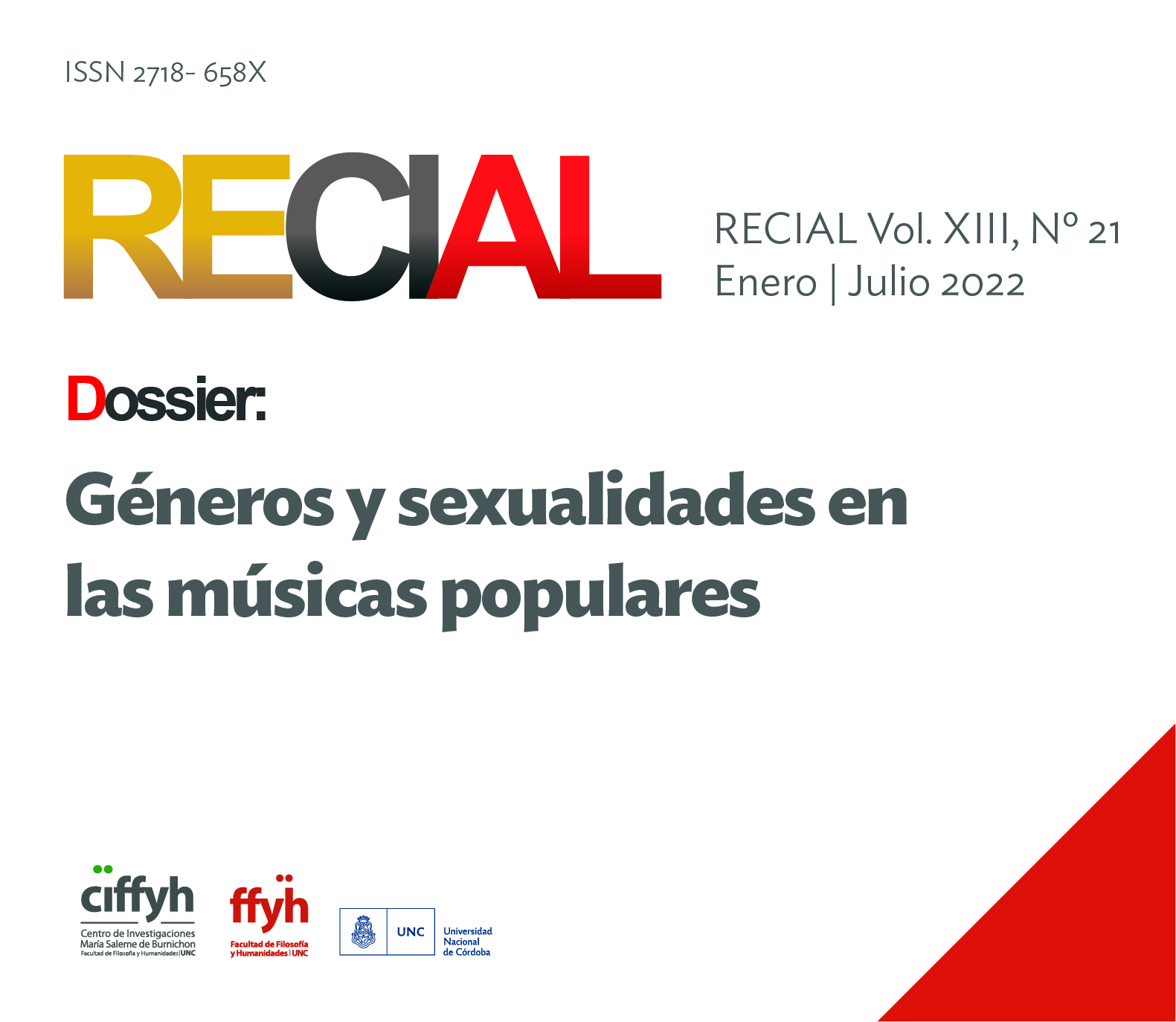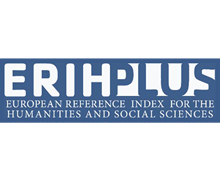César López, the Escopetarra and the Memorialization of the Colombian Armed Conflict: Technologies and Apparatuses of Care
DOI:
https://doi.org/10.53971/2718.658x.v13.n21.37846Keywords:
musical gifts, sonic memorialization, technologies of care, ontological multiplicity, symbolic reparationsAbstract
Colombian musician and activist César López has comforted victims of the Colombian civil war throughout his career. His songs, albums, and artistic-social projects memorialize painful recent-history events and human rights violations. In 2003, López created the escopetarra, a musical instrument that combines a rifle and a guitar. Thereafter, López has been a UN messenger of non-violence. I consider that his compositions are not only sonic memorials but are also musical gifts and, thus, technologies of care. Moreover, as Lopez’s works challenges the logics of heteronormative masculinity, I analyze this case through the feminist and gender studies lenses. I support these claims with data gathered through netnography of several online-concerts and talks, interviews with López, reading journalistic sources, and observing Lopez’s interventions’ online records. I propose that López’s musical gifts operate homologously to memorializations as both share the categorization of technologies of care. Finally, I conclude that Lopez’s activism promotes the democratization of care as he destabilizes the exclusive association of care to the feminine and proposes new masculinities.
Downloads
References
Alemán Salcedo, E., & Cardozo Rusinque, A. A. (2021). Percepción del posconflicto en Colombia: Caso del alumnado de educación secundaria. Educação & Sociedade, 42, e233690. https://doi.org/10.1590/es.233690
Aranguren Romero, J. P. (2012). La gestión del testimonio y la administración de las victimas: El escenario transicional en Colombia durante la Ley de Justicia y Paz. Siglo del Hombre Editores.
Bell, V. (2014a). Missed appointments: Ethics at the Parque de la Memoria. En The Art of Post-Dictatorship. Routledge.
Bell, V. (2014b). Re-turning the past: The ESMA trial and affective architecture at the ‘Space of Memory’. En The Art of Post-Dictatorship. Routledge.
Bjørkhaug, I. (2010). Child Soldiers in Colombia: The Recruitment of Children into Non-state Violent Armed Groups. MICROCON Research Working Paper, 27, 1-23.
Brett, S., Bickford, L., Sevenko, L., & Rios, M. (2007). Memorialization and Democracy: State Policy and Civic Action. Latin American School of Social Sciences (FLACSO), International Center for Transitional Justice (ICTJ), International Coalition of Historic Site Museums of Conscience.
Centro Nacional de Memoria Histórica. (2012, octubre 8). Multimedia Las voces de El Salado. https://www.youtube.com/watch?v=B6UA6zX1yL8
Comisión Interamericana de Derechos Humanos. (2004). Informe sobre el proceso de desmovilización en Colombia.
Comisión Nacional de Reparación y Reconciliación (Ed.). (2013). ¡Basta ya! Colombia, memorias de guerra y dignidad: Informe general (Segunda edición corregida). Centro Nacional de Memoria Histórica.
Sentencia T-151-16, (2016). https://www.corteconstitucional.gov.co/relatoria/2016/t-151-16.htm
Cueva Navarro, A. P. (2012, 2013). Palas por Pistolas: Art as a tool for social change. Latin America Policy Journal, 2, 33-38.
DANE. (2020). Tiempo de cuidados: Las cifras de la desigualdad.
DANE. (2021). El Tiempo de Cuidado durante la Pandemia del COVID-19: ¿Cuánto Han Cambiado las Brechas de Género?
DiSarno, J. (2020). Controlling the Global Turn in Art History: Doris Salcedo as Understood in the Global North [Ph.D.]. https://www.proquest.com/docview/2419008139/abstract/521379DC66FD40BAPQ/1
Drumbl, M. A., & Barrett, J. C. (2019). Research handbook on child soldiers. Edward Elgar Publishing. http://ezproxy.usherbrooke.ca/login?url=https://www.elgaronline.com/view/edcoll/9781788114479/9781788114479.xml
Estefane, A. (2018). Materiality and Politics in Chile’s Museum of Memory and Human Rights. Thresholds, 41, 158-171. https://doi.org/10.1162/thld_a_00107
Evas y Adanes. (2020, abril 12). “Un diálogo inspirador, con experiencias tejedoras de paz y esperanzas. Cantamos al AMOR, a la paz y al poder del cambio. Todos y todas…”. Evas & Adanes on Instagram. https://www.instagram.com/p/B-5GBfnphep/
Flecther, K. (2008, octubre 28). Colombia Dispatch 7: Turning Guns into Guitars. Smithsonian Magazine. https://www.smithsonianmag.com/travel/colombia-dispatch-7-turning-guns-into-guitars-88180366/
Foucault, M. (1988). Technologies of the Self. En L. H. Martin, H. Gutman, & P. H. Hutton (Eds.), Technologies of the Self: A Seminar with Michel Foucault (pp. 16-49). Tavistock Publications.
Gómez-Barris, M. (2010). Witness Citizenship: The Place of Villa Grimaldi in Chilean Memory. Sociological Forum, 25(1), 27-46.
Greiff, P. de. (2014). On Making the Invisible Visible: The Role of Cultural Interventions in Transitional Justice Processes. En C. Ramirez-Barat (Ed.), Transitional justice, culture, and society: Beyond outreach (pp. 10-24). Social Science Research Council.
Griswold, C. L., & Griswold, S. S. (1986a). The Vietnam Veterans Memorial and the Washington Mall: Philosophical Thoughts on Political Iconography. Critical Inquiry, 12(4), 688-719. JSTOR.
Griswold, C. L., & Griswold, S. S. (1986b). The Vietnam Veterans Memorial and the Washington Mall: Philosophical Thoughts on Political Iconography. Critical Inquiry, 12(4), 688-719.
Grupo de Memoria Histórica. (2009). La Masacre del El Salado: Esa Guerra No era Nuestra. Comisión Nacional de Reparación y Reconciliación.
Hawkins, P. S. (1993). The Art of Memory and the NAMES Project AIDS Quilt. Critical Inquiry, 19(4), 752-779.
Hite, K. (2012). Politics and the art of commemoration: Memorials to struggle in Latin America and Spain. Routledge.
Human Rights Watch. (1994). Generation Under Fire: Children and Violence in Colombia. https://www.hrw.org/legacy/reports/1994/colombia/genersum.htm#1
Human Rights Watch. (1998). Human rights watch world report 1999: Events of December 1997-November 1998. Human Rights Watch. https://archive.org/details/humanrightswatch00huma_0
Human Rights Watch, & Brett, S. (Eds.). (2003). You’ll learn not to cry: Child combatants in Colombia. Human Rights Watch.
Huyssen, A. (2003). Present Pasts: Urban Palimpsests and the Politics of Memory. Stanford University Press.
Justice for Colombia. (2022). Colombian Armed Conflict. https://justiceforcolombia.org/about-colombia/colombian-armed-conflict/
Kelly, M. G. E. (2013). Foucault, Subjectivity, and Technologies of the Self [Electronic resource]. En C. Falzon, T. O’Leary, & J. Sawicki (Eds.), A companion to Foucault (pp. 510-525). John Wiley & Sons Ltd.
Loux, M. J. (2012). The Oxford Handbook of Aristotle. En C. Shields (Ed.), Substances, Coincidentals, and Aristotle’s Constituent Ontology. Oxford University Press. https://doi.org/10.1093/oxfordhb/9780195187489.013.0015
Melamed Visbal, J. D. (2014). Del conflicto al posconflicto en el contexto colombiano. Revista de la Universidad de La Salle, 63, 57-73.
Molano Bravo, A. (2015). Fragmentos de la historia del conflicto armado en Colombia (1920-2010). Universidad de Antioquia.
Naciones Unidas. (2020). Achieve gender equality and empower all women and girls. https://www.un.org/sustainabledevelopment/wp-content/uploads/2019/07/E_Infographic_05.pdf
National Council of State Boards of Nursing. (2021, abril). The 2020 National Nursing Workforce Survey. Journal of Nursing Regulation, 12(1).
Niñez YA. (2022a). La niñez no da espera 2022. https://ninezya.org/la-ninez-no-da-espera-2022/
Niñez YA. (2022b). La niñez no da espera: Elecciones 2022. https://ninezya.org/la-ninez-no-da-espera-2022/
Puig de la Bellacasa, M. (2017). Matters of care: Speculative ethics in more than human worlds. University of Minnesota Press.
Restrepo, N. (s. f.). Escopetarra: Instrument of peace. UNODC. Recuperado 28 de marzo de 2020, de https://www.unodc.org/newsletter/en/perspectives/no03/page008.html
Reyes, A. M. (2019a). Antigonismos Metaphoric Burial as Political Intervention in Contemporary Colombian Art. En A. Anreus, R. A. Greeley, & M. A. Sullivan (Eds.), A Companion to Modern and Contemporary Latin American and Latina/o Art. Wiley-Blackwell.
Reyes, A. M. (2019b). The monument to the children of Villatina: Commemorating innocent child victims in the context of lethally stigmatized youth in Colombia. Visual Communication, 18(3), 379-398. https://doi.org/10.1177/1470357219832798
Ritter, J. (2007). Terror in an Andean Key: Peasant Cosmopolitans Interpret 9/11. En Music in the Post-9/11 World. Routledge.
Ritter, J. (2013). Canciones de sirenas: Ritual y revolución en los Andes peruanos. En P. Del Pino & Yezer Carolina (Eds.), Las fronteras del recuerdo: Etnografías de la violencia política en Perú. Instituto Francés de Estudios Andinos.
Royal College of Nursing. (2018, mayo 14). Male nurses debate. The Royal College of Nursing; The Royal College of Nursing. https://www.rcn.org.uk/congress/congress-events/male-nurses
Shaheed, F. (204d. C.). Report of the Special Rapporteur in the field of cultural rights, Farida Shaheed (A/HRC/25/49; pp. 1-23). United Nations: Human Rights Council.
Sykes, J. (2018). The Musical Gift: Sonic Generosity in Post-War Sri Lanka. Oxford University Press.
Trejos Rosero, L. F. (2014). Colombia: Una revisión teórica de su conflicto armado. Revista Enfoques, 11(18), 55-75.
Tronto, J. C. (2013). Caring democracy: Markets, equality, and justice. New York University Press.
UNESCO. (2011, diciembre 8). César López—La escopetarra (español). https://www.youtube.com/watch?v=DIR5eYRwQwk
Vidal, L. (2017, febrero 15). Ellos transforman armas en instrumentos musicales. Bioguia. https://www.bioguia.com/entretenimiento/ellos-transforman-armas-en-instrumentos-musicales_29274086.html
Viveiros de Castro, E., Holbraad, M., & Pedersen, M. A. (2014). The Politics of Ontology: Anthropological Positions. Society for Cultural Anthropology. https://culanth.org/fieldsights/the-politics-of-ontology-anthropological-positions
Ward, D. (2017). Speculative Fiction. En D. Ward (Ed.), Contemporary Italian Narrative and 1970s Terrorism: Stranger than Fact (pp. 195-205). Springer International Publishing. https://doi.org/10.1007/978-3-319-46648-4_5
Young, J. E. (1992). The Counter-Monument: Memory against Itself in Germany Today. Critical Inquiry, 18(2), 267-296.
Young, J. E. (2002). Germany’s Holocaust Memorial Problem—And Mine. The Public Historian, 24(4), 65-80. https://doi.org/10.1525/tph.2002.24.4.65
Published
How to Cite
Issue
Section
License

This work is licensed under a Creative Commons Attribution-NonCommercial-ShareAlike 4.0 International License.
Aquellos/as autores/as que tengan publicaciones en esta revista, aceptan los términos siguientes:
- Los/as autores/as conservarán sus derechos de autor y garantizarán a la revista el derecho de primera publicación de su obra, el cuál estará simultáneamente sujeto a la Licencia de reconocimiento de Creative Commons que permite a terceros compartir la obra siempre que se indique su autor y su primera publicación esta revista.
- Los/as autores/as podrán adoptar otros acuerdos de licencia no exclusiva de distribución de la versión de la obra publicada (p. ej.: depositarla en un archivo telemático institucional o publicarla en un volumen monográfico) siempre que se indique la publicación inicial en esta revista.
- Se permite y recomienda a los/as autores/as difundir su obra a través de Internet (p. ej.: en archivos telemáticos institucionales o en su página web), luego de su publicación en la revista. (Véase El efecto del acceso abierto).























